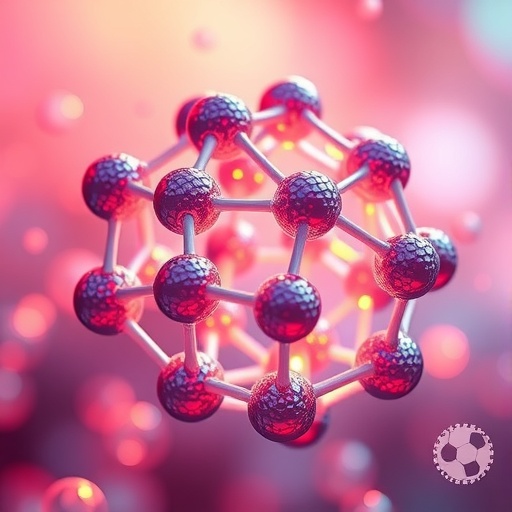Zinc oxide (ZnO) nanomaterials have emerged as promising candidates in the fields of photocatalysis and electrocatalysis, primarily due to their unique structural, electronic, and optoelectronic properties. These characteristics position ZnO above many other materials, making it an attractive choice for environmental and energy-related applications. Researchers have continuously sought to harness ZnO’s capabilities, particularly in energy conversion and pollutant degradation, leading to significant advancements in the development of efficient photocatalysts and electrocatalysts. Recent studies highlight a newfound interest in synthesizing and functionalizing these nanomaterials to enhance their photocatalytic and electrocatalytic performances, marking a pivotal point in materials science and energy technology.
Photocatalysis involves the acceleration of a photoreaction in the presence of a catalyst, enabling the degradation of organic pollutants or the generation of hydrogen from water splitting processes. ZnO, with its wide bandgap of about 3.3 eV, can efficiently utilize ultraviolet (UV) light for activating its photocatalytic properties. The ability of ZnO to generate electron-hole pairs upon UV light irradiation is crucial, but it also poses challenges, such as the rapid recombination of these charge carriers. Innovative strategies, including doping with metal ions and non-metal ions, are being explored to reduce this recombination while enhancing the photocatalytic activity for various applications.
The synthesis of ZnO nanomaterials can be achieved through various methods, including sol-gel, hydrothermal, and chemical vapor deposition techniques. Each method yields ZnO nanostructures with tailored morphologies, sizes, and surface properties, allowing researchers to optimize their performance in photocatalytic and electrocatalytic applications. For instance, nanostructured forms such as ZnO nanoparticles, nanorods, and nanosheets exhibit distinct performance characteristics, further emphasizing the significance of synthetic routes in influencing the material’s efficacy.
A critical approach in recent investigations focuses on modifying the surface properties of ZnO to enhance its catalytic activities. Techniques such as coating ZnO with several metal or non-metal oxides have gained traction. This surface modification not only improves the charge separation efficiency but also introduces active sites that facilitate the catalytic reactions. The interaction between ZnO and these additives leads to synergistic effects, ultimately improving the overall performance in applications such as environmental remediation and fuel cells.
Furthermore, the role of ZnO as an electrocatalyst has garnered substantial attention. Electrocatalysis is pivotal for various energy conversion technologies, including fuel cells and batteries. ZnO’s ability to catalyze reactions such as oxygen reduction and hydrogen evolution can significantly contribute to advancements in energy storage systems. By promoting these reactions, ZnO-based electrocatalysts can improve the energy efficiency and durability of devices, paving the way for greener technologies for hydrogen production and fuel cell applications.
The environmental implications of employing ZnO-based nanomaterials in photocatalytic systems are substantial. They have shown promise in degrading toxic organic pollutants in aqueous environments, leading to a more sustainable approach to wastewater treatment. The advancements in ZnO photocatalysts also play a crucial role in addressing pollution-related challenges, particularly in urban areas where industrial discharge and automobile emissions are prevalent. Researchers are beginning to deploy these materials in real-world scenarios, demonstrating their effectiveness and reliability in treating contaminated water and air.
One intriguing aspect of ZnO nanomaterials is their potential to operate under visible light irradiation. By employing strategies such as heterojunction formation with other semiconductors, researchers have been able to extend the light absorption range of ZnO. This capability enhances its photocatalytic efficiency under solar light, which constitutes the majority of the photon energy available on Earth. Solar energy utilization through ZnO photocatalysts presents an environmentally friendly solution to global energy challenges.
Moreover, the scalability of synthesizing ZnO nanomaterials is critical for future commercial applications. Researchers are now focusing on sustainable and cost-effective methods to produce these nanostructures at a large scale while maintaining their performance characteristics. This aspect is crucial as it aligns with worldwide efforts to shift towards renewable energy sources and sustainable materials. Innovations in production methodologies will likely determine how quickly and effectively ZnO nanomaterials can be industrially adopted.
In parallel, the advancements in characterization techniques are providing deeper insights into the properties and behaviors of ZnO nanostructures. Advanced spectroscopic methods allow researchers to understand the electronic structures and surface interactions of these materials thoroughly. This knowledge is particularly vital in tailoring ZnO-based nanomaterials for specific applications, as it can inform the design of their surface chemistry and morphology to optimize catalytic activity.
The prospect of integrating ZnO into composite materials holds great potential. Hybrid systems that combine ZnO with other functional materials can leverage the strengths of each component to create superior photocatalysts and electrocatalysts. The cooperative mechanisms in such integrated systems can lead to unprecedented levels of efficiency and stability, attracting significant interest in both academic and industrial sectors.
As research into ZnO-based nanomaterials continues to progress, the future looks promising for these versatile materials. Their applications span across energy generation, environmental remediation, and beyond, potentially making them pivotal to addressing several of the world’s pressing challenges. Continuous exploration into innovative synthesis and modification techniques will likely yield breakthroughs that extend their utility and effectiveness.
In summary, zinc oxide-based nanomaterials present a fascinating area of study that bridges nanotechnology and catalysis. Their exceptional physical and chemical properties enhance their role as efficient photocatalysts and electrocatalysts. With ongoing advancements in synthesis, characterization, and application strategies, ZnO nanomaterials are set to play a crucial role in sustainable technology solutions. The commitment to improving their properties and understanding their mechanisms continues to fuel scientific inquiry, ushering in a new era of innovative applications in energy and environmental science.
Subject of Research: Zinc oxide-based nanomaterials as photocatalysts and electrocatalysts.
Article Title: Zinc oxide-based nanomaterials as efficient photocatalysts and electrocatalysts.
Article References:
Yadav, P., Aggarwal, S., Chaudhary, A. et al. Zinc oxide-based nanomaterials as efficient photocatalysts and electrocatalysts.
Ionics (2025). https://doi.org/10.1007/s11581-025-06591-9
Image Credits: AI Generated
DOI: https://doi.org/10.1007/s11581-025-06591-9
Keywords: Zinc oxide, photocatalysis, electrocatalysis, nanomaterials, environmental remediation, energy conversion.




